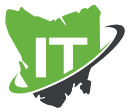Tasmanian IT – “Take 5”
Tasmanian IT Blog • February 07, 2019
Each week, we post a “Take 5” article to our website with tips, tricks, thoughts and actions we’ve come across during the week that we feel you may benefit from too.
It’s designed to be short and sharp that you can read when you need to “Take 5”.
Grab a drink, give yourself a (productive) break and check out our latest 5 below.
1. Feed the brain with this book – Brain Rules
In a world where we constantly seek improvements to productivity in personal and business life, there is an entire dedicated market for the topic. Usually this market gives you hints and tips to improve productivity, but don’t dive deeper to provide an understanding of why.
At Tasmanian IT, we have always felt that understanding core principles and processes provides better delivery of outcomes. This book tells you what to do, but just as (maybe more) importantly, why to do it.
From dispelling the myth of multi-tasking to why you should consider conducting meetings while walking, Dr. John Medina walks through 12 distinct “Brain Rules” that you can use to improve success. Physical, digital and audio versions of the book are available – click the link to find out more.
Link: http://www.brainrules.net/about-brain-rules
2. Master Process and Diagram design – online and free!
With a picture worth a thousand words, from mind mapping to process design, being able to document the clear depiction of a scenario is vital.
Tools to deliver diagrams that are high quality and easy to create usually come at a significant premium price wise. Lucky for you, the clever people over at “draw.io” have developed a free (yep free!) online tool to get your diagram dreams sorted.
Further, there is no sign up, no need to provide credit, email or personal details, just navigate to the website and start mapping out your needs.
Link: https://www.draw.io/
3. 2.2 billion breached user accounts found in online repository – how does this impact business?
Firstly, as a friend of ours pointed out, this is not a set of new accounts, it is a collation of accounts that have been compromised over years. It just happens to be the largest single repository identified publicly to date.
Secondly, this is not designed to get management panicking, it is a reminder that information security is a real and constant business issue, that needs tools, policies, procedures and constant management attention.
A broad mix of personal and business services have been breached over the years. With 2.2 billion breached accounts identified, odds are your business is at risk.
If your business or organisation does not have digital account/identity management processes in place, we recommend looking into:
- Seeking staff to update passwords every 3 months
- Implement password standards, such as
- 10 character complex password (i.e. minimum 10 characters, requires Letters, Numbers and symbols)
- 15 character non-complex passphrase (i.e minimum 15 characters, must be a minimum of two words, no minimum requirement for letters/numbers/symbols)
- Look to implement a Password Manager tool for your organisation such as Thycotic Secret Server, 1Password, DashLane etc.
- Consider 2-factor authentication for your mission critical services
We also recommend spending some time reviewing the Australian Government website Australian Cyber Security Centre (Link Below) with Management and Executive paying particular attention to learning about Cyber Security concept “The Essential Eight”.
Link: Forbes Article – 2.2 Billion Accounts Breached https://www.forbes.com/sites/daveywinder/2019/02/01/2-2-billion-accounts-found-in-biggest-ever-data-dump-how-to-check-if-youre-a-victim/#41a1977b48ae
Link: Australian Cyber Security Centre (ACSC) – Mitigation Strategies (& The Essential Eight)
https://acsc.gov.au/infosec/mitigationstrategies.htm
Link: ACSC – Stay Smart Online Business Guide (PDF)
https://www.staysmartonline.gov.au/sites/default/files/Stay-Smart-Online-Small-Business-Guide_1.pdf
4. The art of Resilience
Dealing with change or loss is an inevitable part of life. At some point, everyone experiences varying degrees of setbacks. Some of these challenges might be relatively minor (not getting the job you wanted), while others are disastrous on a much larger scale (like our weather here in Tasmania and across the country). How we deal with these problems can play a significant role in not only the outcome but also the long-term psychological consequences.
Resilience is what gives people the strength to cope with such stress and hardship. It is the mental reservoir of strength that people are able to call on in times of need to carry them through without falling apart. This does not mean that they experience less distress, grief, or anxiety than other people do. It simply means that they handle such difficulties in ways that foster strength and growth. Psychologists believe that resilient individuals are better able to handle such adversity and rebuild their lives after a catastrophe.
So how do people who deal with difficult events develop resilience?
The American Psychological Association has a full article (Link provided below) plus some key tips on what resilience looks like and how to develop it.
However for a quick read the following is a short list of identified attributes that are common with resilient people
- Holding positive views of themselves and their abilities
- The capacity to make realistic plans and stick to them
- Being a good communicator
- Having solid goals to work towards
- Viewing themselves as fighters rather than victims
- Having high emotional intelligence and managing emotions effectively
How we view adversity and stress strongly affects how we succeed, and this is one of the most important reasons that having a resilient mindset is important.
Link: https://www.apa.org/helpcenter/road-resilience
5. Quote of the week
“Work takes on new meaning when you feel you are pointed in the right direction. Otherwise, it’s just a job, and life is too short for that.” – Tim Cook
Have a great week from the Tasmanian IT Team







